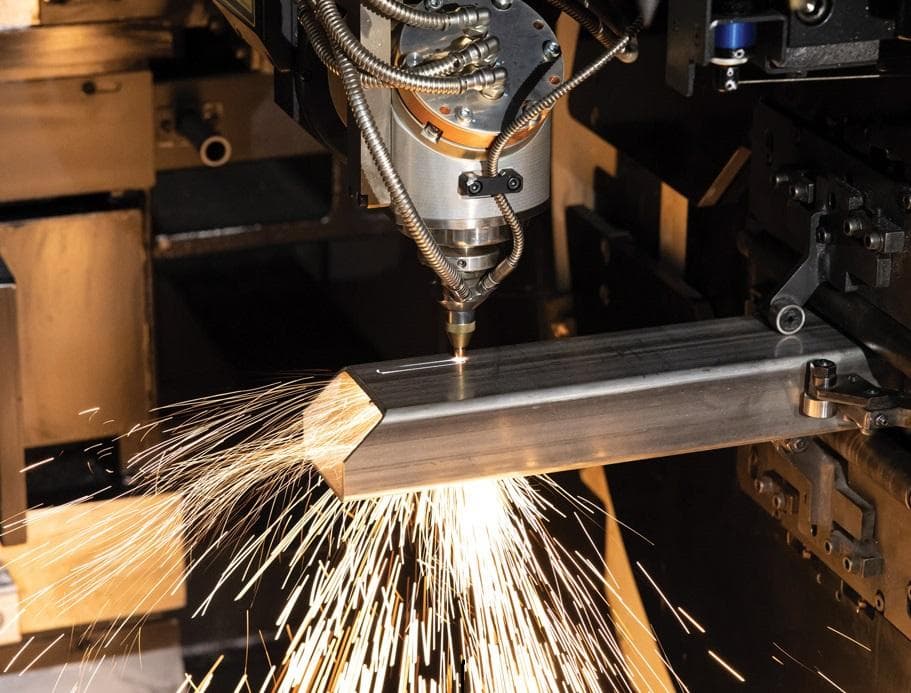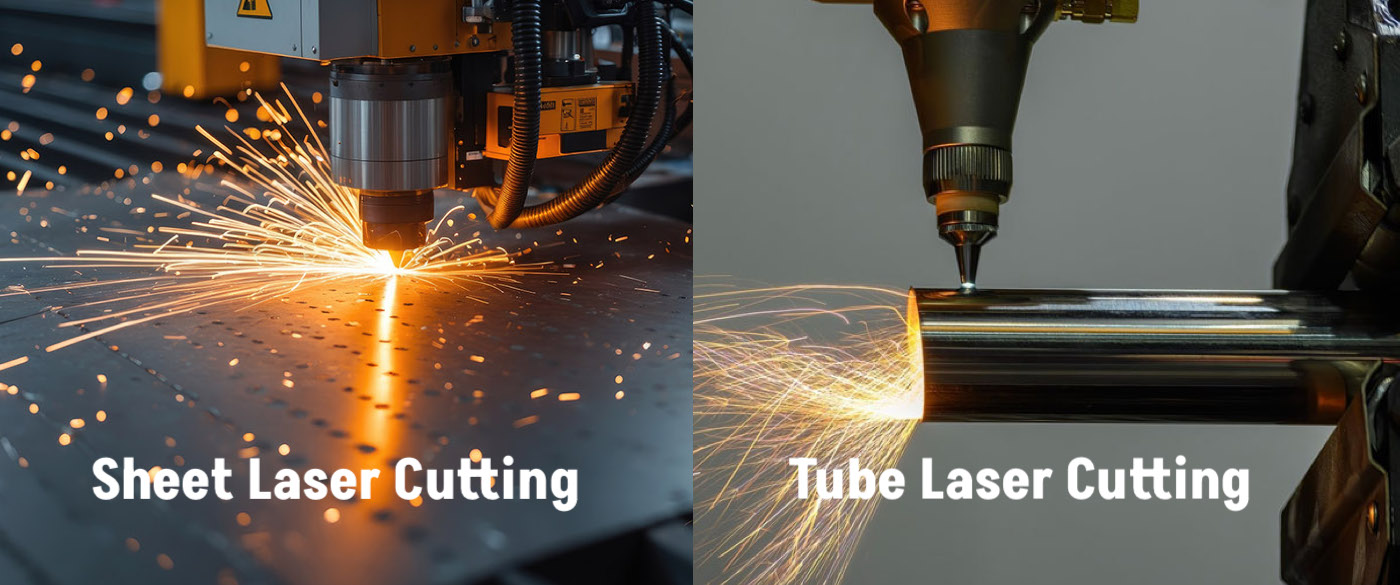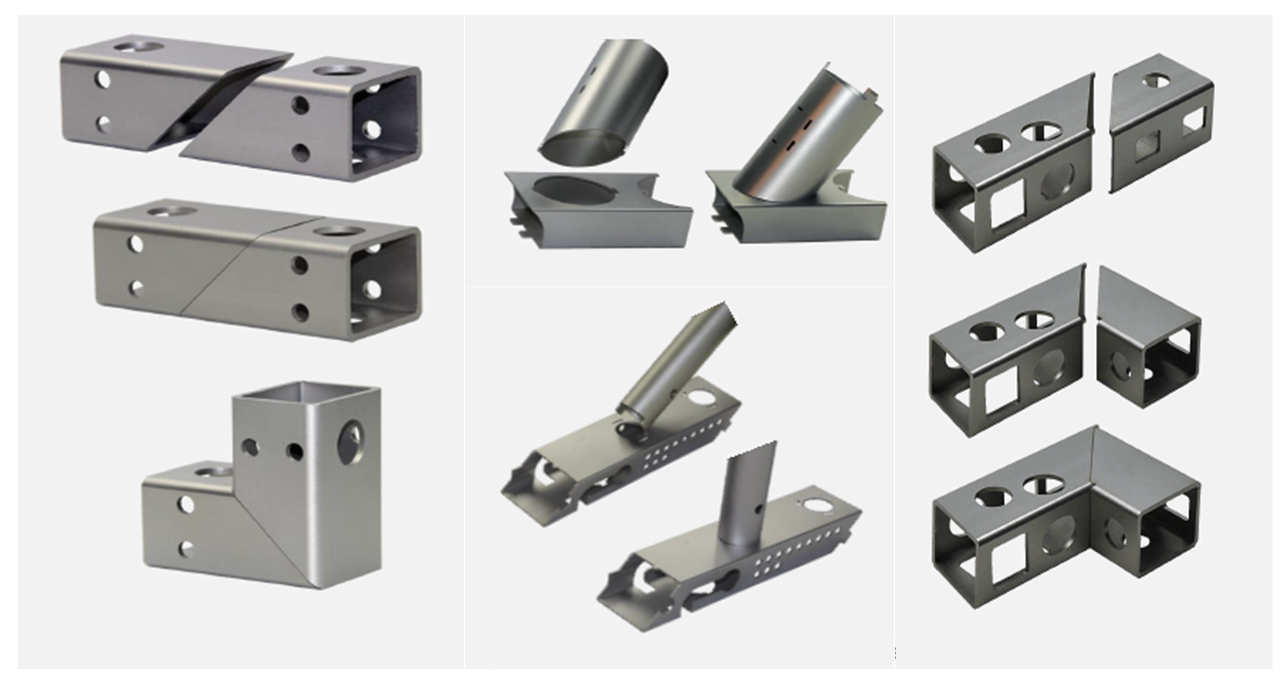Explore precision laser cutting for metals from sheet and tube cutting to custom CNC fabrication. Learn how industries use laser cutting services for accuracy, speed, and cost-efficiency.

Laser cutting has become one of the most advanced and efficient methods for shaping and processing metal. Unlike traditional machining, laser cutting uses a high-powered, focused beam of light to achieve precision that mechanical tools cannot match. Whether for sheet metal, tubing, or custom components, laser cutting services offer unmatched accuracy, minimal waste, and flexibility across multiple industries.
Today, laser cutting isn’t just for large manufacturers. From small-batch prototypes to high-volume production, online laser cutting services have made this technology accessible to anyone needing fast, accurate, and repeatable parts. Here at Entag, we harness this technology to deliver precision-cut components for clients across Egypt and beyond.
Laser cutting technology has come a long way since its introduction in the 1960s. The first industrial laser cutting machines were developed using CO₂ lasers, mainly for cutting metals like stainless steel and carbon steel with high precision. Over time, advancements in optics, automation, and CNC integration made laser cutting for metal fabrication more accurate and cost-effective.
By the 1980s and 1990s, fiber laser cutting began to emerge, offering faster cutting speeds, lower maintenance, and the ability to process reflective metals such as aluminum, brass, and copper. Today, modern CNC laser cutting services combine computer-controlled systems with powerful laser sources to deliver tolerances as tight as ±0.05 mm.
This evolution transformed metal fabrication industries worldwide from automotive and aerospace to consumer goods and construction. What started as a specialized technology is now widely available through on-demand online laser cutting services, making it accessible for both prototypes and mass production.
Laser cutting uses a concentrated beam of light to heat, melt, or vaporize material, leaving a clean, narrow cut. Modern CNC-controlled systems ensure precision by guiding the beam across metal sheets, plates, or tubes.
The main types of laser cutting include:

Over the decades, different laser cutting technologies have been developed to meet the growing needs of metal fabrication industries. Each method provides unique advantages for sheet metal, tubing, and custom CNC applications.
CO₂ laser cutting machines were among the first to be used for industrial laser cutting. They are reliable for sheet metal laser cutting, plastics, and even some non-metals. In metalworking, CO₂ lasers deliver clean cuts in carbon steel and stainless steel, making them a cost-effective solution for medium-thickness materials.
Today, fiber laser cutting is one of the most advanced and widely used methods. With faster processing speeds, lower maintenance, and high efficiency, it has become the standard for CNC laser cutting services. Fiber lasers are especially effective for reflective metals like aluminum, brass, and copper, often used in construction, automotive, and consumer goods applications.
For highly detailed or specialty work, Nd:YAG laser cutting provides extremely precise results. It is often used for precision laser cutting of thick metals, engraving, or drilling applications that require tight tolerances. Despite higher maintenance needs, this technology remains valuable in sectors like aerospace and defense.
Modern factories are adopting hybrid laser cutting systems that integrate robotic arms and CNC machining to handle complex geometries. With the rise of AI-driven automation, online laser cutting services are now more accurate, accessible, and faster than ever—supporting everything from prototyping to high-volume production.
To achieve high precision and clean edges in metal fabrication, explore our detailed article on laser cutting services in Egypt.
The quality of laser cutting for metal fabrication depends on several technical factors that influence accuracy, edge finish, and efficiency. Engineers and manufacturers often evaluate these elements before choosing a CNC laser cutting service to ensure the best results.
Different materials react differently to the laser beam. For example, stainless steel, aluminum, and carbon steel each require specific settings. The thicker the sheet or tube, the more power is needed, which can affect precision and cutting speed. Advanced fiber laser cutting machines handle reflective metals like brass and copper more efficiently than traditional CO₂ systems.
The balance between laser power and cutting speed is critical. Higher power improves the ability to cut thicker metals, while optimized speed prevents burn marks and excessive heat. Modern industrial laser cutting machines with CNC control adjust these parameters automatically for consistent results.
Using assist gases such as oxygen, nitrogen, or compressed air helps achieve clean cuts. Oxygen supports faster cutting of carbon steel, while nitrogen produces burr-free edges in stainless steel and aluminum. This factor is key for achieving precision laser cutting without secondary finishing.
Accurate beam focusing is essential for narrow kerf width and sharp edges. Poor alignment or worn optics can reduce quality and cause inconsistent cuts. Properly calibrated CNC laser cutting services ensure stability and repeatability in production runs.
The quality of the digital design directly impacts the outcome. Well-prepared CAD files combined with optimized CNC programming enable complex geometries, tight tolerances, and efficient material usage. This integration makes online laser cutting services suitable for prototypes as well as large-scale manufacturing.

At Entag, we combine years of experience in CNC laser cutting services with advanced equipment to deliver high-precision results for sheet metal, tubes, and custom components. Our team of skilled engineers ensures every project meets strict quality standards, achieving tolerances as tight as ±0.05 mm. From stainless steel and carbon steel to aluminum, brass, and copper, we provide precision laser cutting for metal fabrication that supports diverse industries including automotive, construction, and consumer goods.
What sets us apart is not only our technology but also our approach. By integrating fiber laser cutting machines with CAD-to-laser automation, we help clients optimize designs, reduce material waste, and speed up production cycles. Whether you need rapid prototyping, small-batch runs, or high-volume manufacturing, our industrial laser cutting solutions are tailored to ensure efficiency, accuracy, and cost-effectiveness at every stage.
Learn how smart factories are transforming production efficiency through digital manufacturing for companies in Egypt.
The Challenge:
An equipment manufacturer required 300 precision-cut steel tubes for a heavy-duty frame system. The tubes needed accurate slots and notches for weld assembly, but their previous supplier delivered inconsistent cuts, leading to long delays in assembly.
Our Solution:
We used a CNC tube laser system capable of 3D cutting. This allowed for precise slotting and hole placement directly into the tubes, reducing secondary operations. With tolerances of ±0.1 mm, the parts were perfectly aligned for fast assembly.
The Result:
The customer reduced assembly time by 35% and eliminated rework costs. The project was delivered within 2 weeks, enabling the client to meet their production deadline.
For components requiring extreme precision and fine detailing, explore our guide to wire EDM services and learn how this process ensures accuracy in metal fabrication.
Laser cutting stands out because it:
Q1: What metals can be cut with a laser?
Most commonly stainless steel, aluminum, carbon steel, brass, and copper.
Q2: How thick of a metal sheet can laser cutting handle?
Depending on the machine, up to 25 mm for carbon steel, 20 mm for stainless, and 12 mm for aluminum.
Q3: Is laser cutting cost-effective for small batches?
Yes, the setup time is minimal, making it ideal for prototypes and low-volume runs.
Q4: How accurate is CNC laser cutting?
Typical tolerances range from ±0.05 to ±0.1 mm, depending on material thickness and geometry.
Laser cutting machining is one of the most efficient, flexible, and precise methods for metal fabrication today. Whether for sheet components, tubes, or complex custom parts, laser cutting reduces lead times, ensures repeatability, and supports industries from construction to consumer goods.
If your business needs precision metal laser cutting services, now is the perfect time to integrate this technology into your production workflow.
.png)